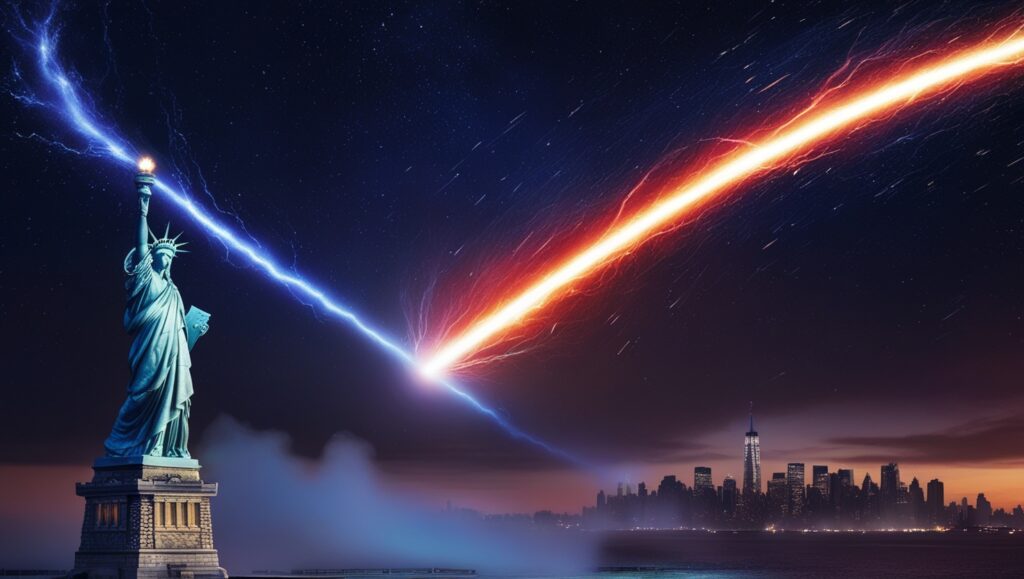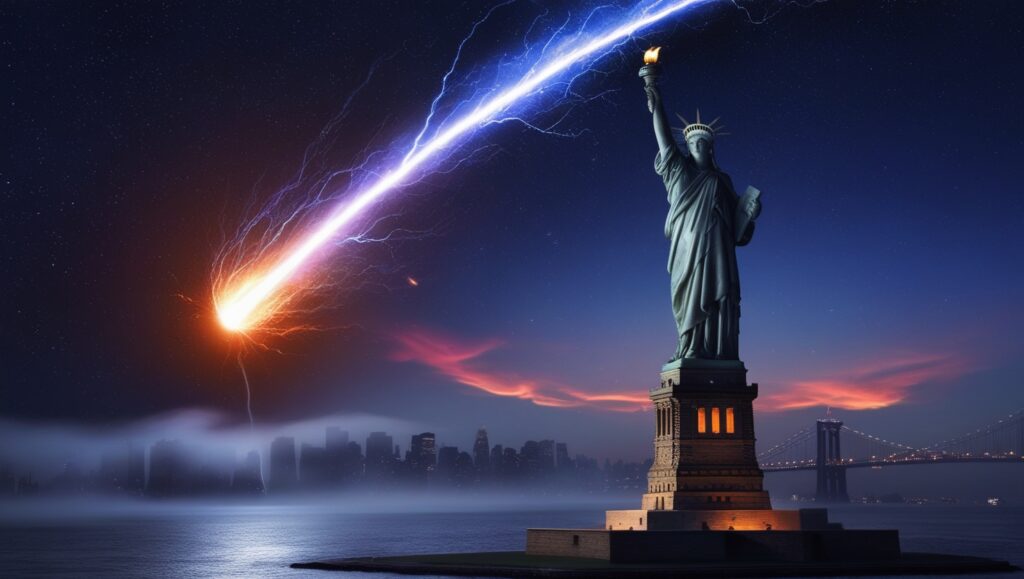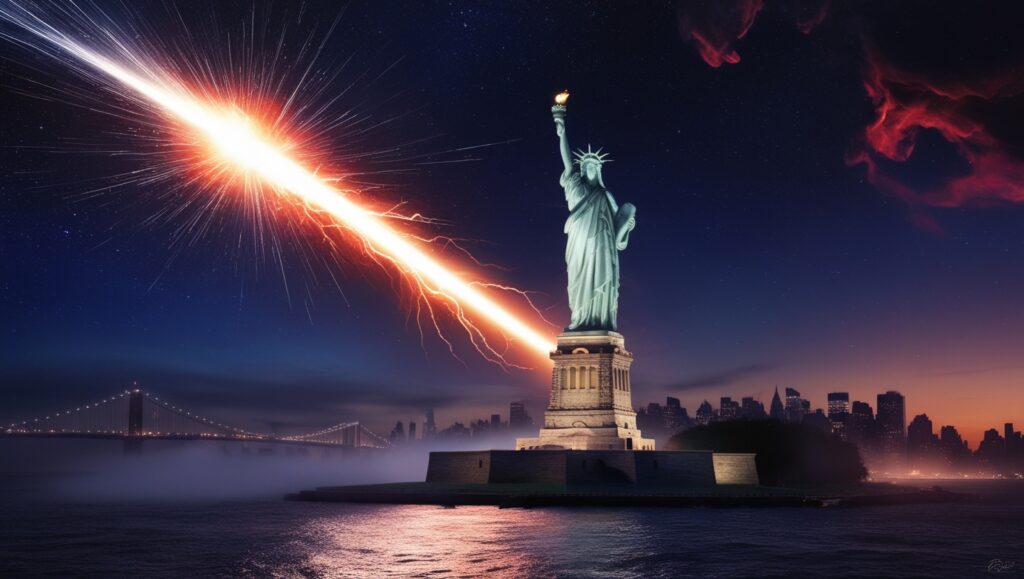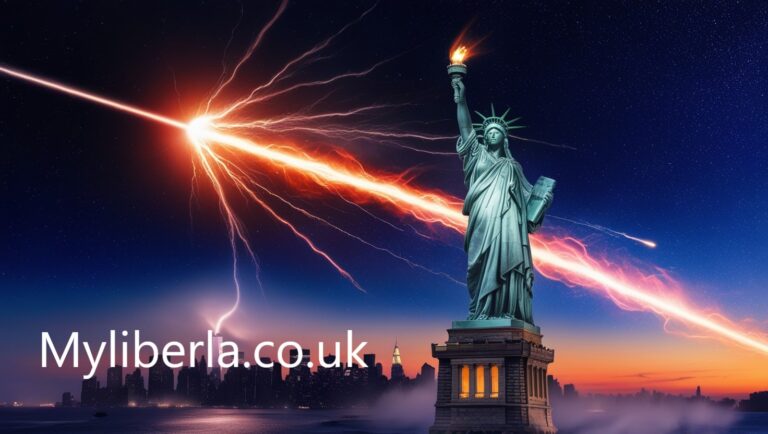In a stunning display of cosmic drama, meteor blaze past statue of liberty, creating a spectacle that captured the imagination of millions. This extraordinary event highlighted the grandeur of space phenomena and underscored the Statue of Liberty’s symbolic presence in the heart of New York City. This article delves into the details of this celestial encounter, exploring the scientific, historical, and cultural implications of the meteor’s visit.
The Meteor’s Journey: An Overview
Understanding Meteor Showers
meteor blaze past statue of liberty, usually called “meteorites.” These iridescent occasions happen when little space flotsam and jetsam, known as meteoroids, enter Earth’satmosphere and burn up due to friction. The phenomenon of a meteor streaking past a landmark like the Statue of Liberty adds a layer of magnificence to an already spectacular cosmic event.
The Path of the Meteor
Astronomers and space agencies closely monitored this particular meteor’s trajectory. Originating from the asteroid belt between Mars and Jupiter, it traveled through the vast expanse of space before entering Earth’s atmosphere. The meteor blaze past statue of liberty, a combination of precise orbital mechanics and the vastness of space, making this approach both rare and mesmerizing.

The Statue of Liberty: An Icon of Resilience
Historical Significance
The Statue of Liberty, a gift from France to the United States, was dedicated in 1886. it remains as an image of opportunity, a majority rule government, and the persevering through soul of the American public. Situated on Freedom Island in New York Harbor, it has invited huge number of migrants and keeps on being an encouraging sign and freedom.
Symbolic Resonance with the Meteor Event
The juxtaposition of a meteor soaring past this iconic symbol of liberty creates a powerful visual metaphor. As the meteor blaze past statue of liberty, it seemed to echo the Statue’s message of freedom and exploration, suggesting a cosmic connection between the human spirit and the vast, mysterious universe.
The Science Behind the Meteor
Composition and Characteristics
Meteors can vary widely in size, composition, and appearance. Some are composed mainly of metal, while others are made of rock or a combination of materials. The meteor blaze past statue of liberty was composed primarily of nickel and iron, contributing to its bright and fiery appearance as it disintegrated upon atmospheric entry.
Observational Data
Astronomers use various tools to study meteors, including telescopes and radar systems. In the case of this meteor, data was collected from multiple observatories to track its speed, trajectory, and composition. This information helps in understanding the meteor’s physical properties and provides insights into the dynamics of its interaction with Earth’s atmosphere.

Cultural Impact and Public Reaction
Media Coverage
The meteor’s close approach to such a prominent landmark generated extensive media coverage. News outlets around the world reported on the event, capturing viewers’ awe and excitement. The visual spectacle of a meteor blazing across the sky near the Statue of Liberty became an emblem of celestial wonder, sparking numerous articles, videos, and social media posts.
Artistic and Popular Interpretations
Artists and filmmakers were quick to draw inspiration from this celestial event. The imagery of a meteor streaking past the Statue of Liberty found its way into various forms of art and entertainment, symbolizing a connection between humanity and the cosmos and a reminder of the endless possibilities beyond our world.
The Future of Meteor Observation
Advances in Technology
Significant technological advancements have benefited the study of meteors. Modern telescopes, space probes, and sophisticated software allow scientists to track and analyze meteors accurately. Future technological developments promise even more detailed observations, which could help predict and understand such events more precisely.

The Role of International Collaboration
Meteor observation often involves collaboration between countries and space agencies. International partnerships enhance our ability to monitor and study meteors, sharing data and resources to improve our understanding of these cosmic phenomena. The recent meteor event exemplifies the global effort to explore and appreciate the mysteries of space.
Conclusion
The meteor that blazed past the Statue of Liberty was more than just a spectacular celestial event; it was a moment that linked humanity’s quest for knowledge with the enduring symbols of freedom and exploration. As the meteor streaked across the sky, it reminded us of the vastness of the universe and highlighted the connection between human achievements and cosmic phenomena. This event serves as a reminder of the boundless possibilities at the intersection of science, history, and cultural symbolism.
FAQs
What is a meteor?
A meteor is a small fragment of space debris that burns upon entering Earth’s atmosphere, creating a bright streak of light commonly known as a “shooting star.”
Why did the meteor blaze past the Statue of Liberty?
The meteor’s path resulted from its orbital trajectory intersecting closely with Earth, specifically near the Statue of Liberty. This rare alignment made the event particularly dramatic and noteworthy.
How do scientists track meteors?
Scientists track meteors using a combination of telescopes, radar systems, and observational data. These tools help determine the meteor’s speed, composition, and trajectory.
What was the meteor composed of?
The meteor that passed the Statue of Liberty was primarily composed of nickel and iron, contributing to its bright and fiery appearance as it entered the Earth’s atmosphere.
How can I learn more about meteors?
To learn more about meteors, you can explore resources from space agencies such as NASA, consult astronomy books, or follow updates from observatories and scientific organizations that specialize in space phenomena.


